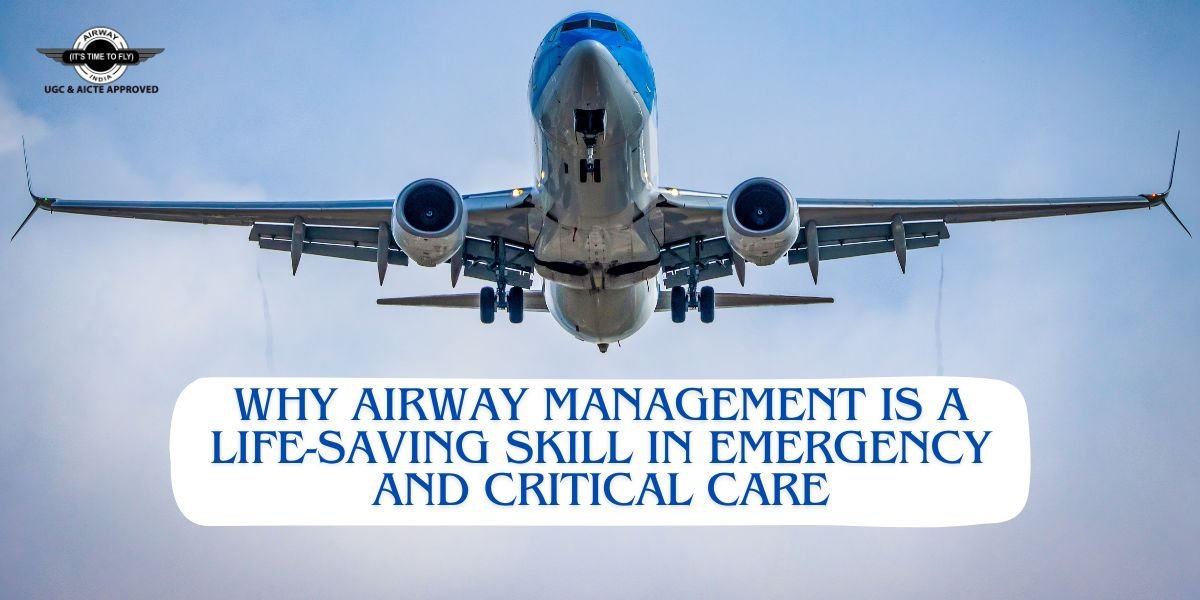
Imagine you’re in an emergency room. A patient is rushed in—unconscious, struggling to breathe. The doctors and nurses move fast, checking the airway first. Within seconds, they act, clearing the obstruction and restoring oxygen flow. This single step—airway management—is what decides whether the patient survives or not.
In the world of emergency and critical care, ensuring a patient can breathe is the first and most important priority. Without oxygen, the brain starts shutting down in minutes. This is why every healthcare professional—whether in emergency medicine, anesthesia, or intensive care—must be skilled in airway management.
What is Airway Management?
Simply put, airway management is the process of making sure a person can breathe properly. This could mean:
- Helping an unconscious patient breathe using simple head positioning techniques
- Using medical devices like oxygen masks, bag-valve masks, or airway tubes
- Performing advanced procedures like intubation or tracheostomy in critical situations
Doctors, paramedics, and nurses working in ICUs, emergency rooms, and trauma units use these techniques every day. For them, mastering airway management isn’t optional—it’s life-saving.
Why is Airway Management So Critical?
When a patient can’t breathe, nothing else matters. Airway, Breathing, Circulation (ABC) is the golden rule in emergency medicine. If the airway is blocked, oxygen can’t reach the lungs, the brain is deprived of oxygen, and within minutes, the heart stops.
Here’s why airway management is the #1 priority in emergency care:
1. Trauma & Accidents – Every Second Counts
Think about car crashes, falls, or head injuries—these can cause airway blockages due to bleeding, swelling, or fractures. In such cases, first responders and emergency teams need to act fast. Clearing the airway and securing it with oxygen support can be the difference between survival and irreversible brain damage.
2. Cardiac Arrest & Respiratory Failure
A patient in cardiac arrest has only a few minutes before their organs shut down. CPR is important, but without proper airway control and ventilation, the chances of survival drop drastically. That’s why emergency teams focus on bag-mask ventilation, intubation, or advanced airway devices to keep oxygen flowing.
3. Anesthesia & Surgery – The Airway is Everything
Every time a patient is put under anesthesia, their normal breathing is temporarily stopped. That’s where anesthesiologists step in. Their job is to take control of the airway, ensuring safe oxygen flow during surgery. Without this, even a routine operation can turn into a life-threatening emergency.
4. ICU & Critical Care – Long-Term Airway Support
Many ICU patients need ventilators to help them breathe. Conditions like COVID-19, severe pneumonia, or neurological diseases can make breathing difficult or impossible without mechanical support. Managing tracheostomy tubes and ventilators is a daily task in critical care medicine.
What Makes Airway Management Difficult?
Even for trained professionals, securing an airway isn’t always easy. Some of the biggest challenges include:
- Difficult airway anatomy (small jaw, obesity, facial trauma)
- Swelling or blockage due to burns, allergies, or infections
- Laryngospasm (vocal cord tightening) during intubation
- Limited time in emergency situations—seconds can mean life or death
This is why continuous training in airway management is essential for all healthcare providers. Knowing how to handle unexpected complications is just as important as mastering the basics.
Why Training in Airway Management is a Must for Healthcare Professionals
Airway emergencies are unpredictable. One moment, everything is fine; the next, a patient is gasping for air. That’s why hands-on training, simulation-based practice, and real-world experience are crucial for medical professionals.
Benefits of Advanced Airway Training:
✔ Faster decision-making in high-pressure situations ✔ Confidence in handling difficult airways ✔ Mastery of advanced tools like video laryngoscopy & supraglottic airways ✔ Better patient survival rates and improved outcomes
From paramedics and emergency physicians to anesthesiologists and critical care specialists, anyone involved in patient care should constantly upgrade their airway management skills.
The Future of Airway Management
Advancements in medical technology are improving airway management techniques. New tools like video laryngoscopes and AI-assisted intubation systems are making airway procedures safer and more efficient.
Additionally, organizations like Aviation India provide the latest aviation news in India, ensuring professionals stay informed about healthcare developments in aviation medicine.
Conclusion
In any medical emergency, the first few minutes are crucial. If the airway isn’t managed properly, everything else falls apart. Whether it’s a trauma case, cardiac arrest, or an ICU patient needing ventilation, the ability to secure an airway is one of the most powerful skills a healthcare professional can have.
If you’re in the medical field, investing time in airway management training is not just important—it’s essential. Because at the end of the day, a well-managed airway doesn’t just improve patient outcomes—it saves lives.
For more information on airway management training, visit Airway India.

